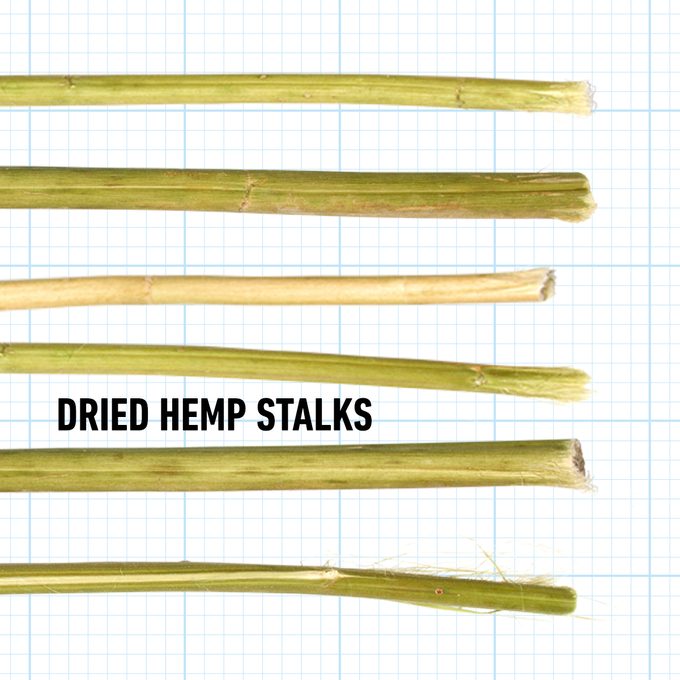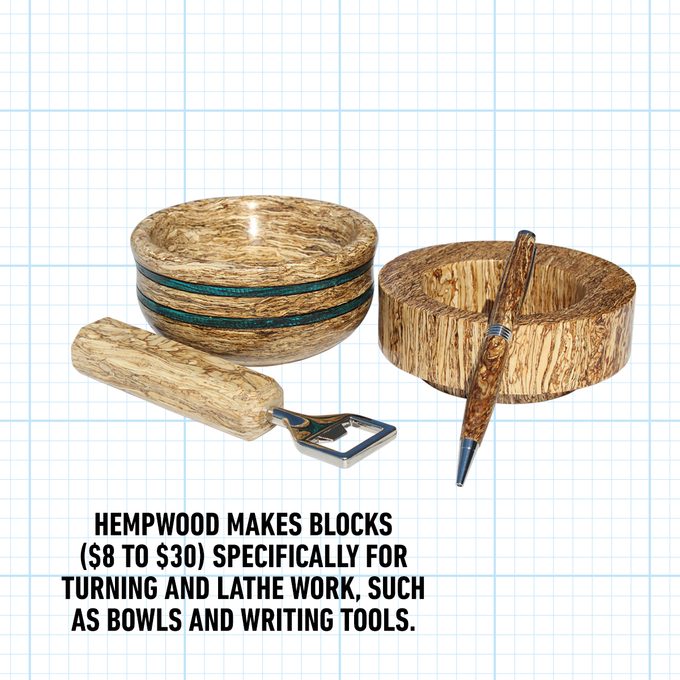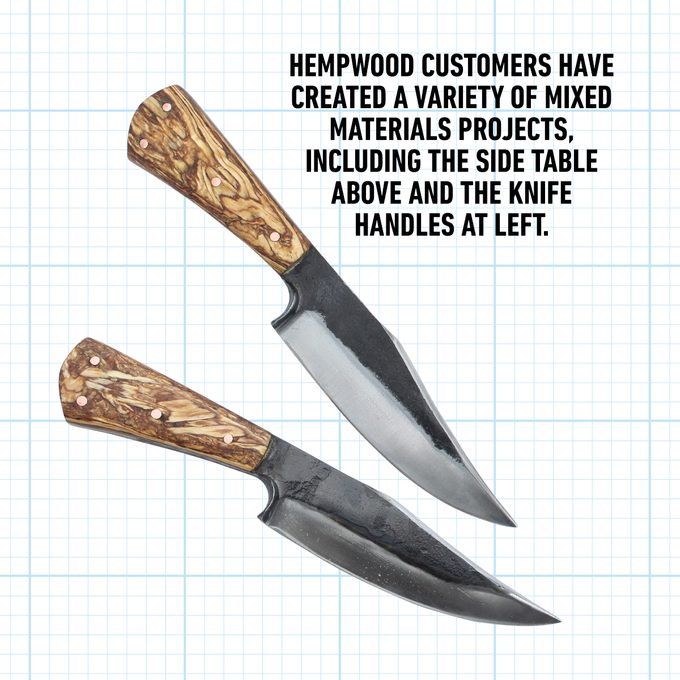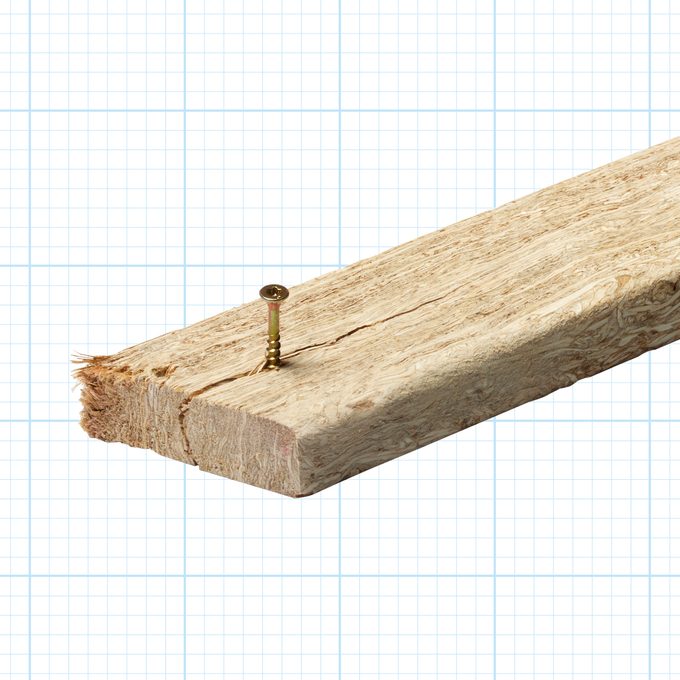What to Know About Hemp Building Products
Like siblings who grow up with unique personalities, hemp and marijuana come from the same plant family (Cannabaceae) but have different character traits, and people enjoy them for different reasons. We’re here to talk about hemp and its benefits to builders and woodworkers.
Hemp is one of the fastest-growing plants on Earth; it can be harvested in three to four months. Speedy regeneration makes it popular for commercial goods.
Hemp fibers have been spun into usable material for millennia worldwide. And our forefathers, including Thomas Jefferson and George Washington, documented hemp farming. No record exists of their recreational use of hemp; that’s not why they farmed it.
The 2018 U.S. Farm Bill was amended to legalize agricultural hemp. That changed the marketplace for hemp products. Unlike marijuana, hemp is farmed so it has lower concentrations of tetrahydrocannabinol, or THC. In higher concentrations, THC gives marijuana its mind-altering effects. We don’t care about that; we just want to alter some lumber and other building products.

Hemp Building Products
Hemp is commonly used for its fibers, which are spun into yarn, rope and canvas materials.
The fibers are evolving well beyond just twine. A company called Hempitecture, based in Ketchum, Idaho, makes a concrete block-like product that fits in a growing category of “hempcrete” materials. The product is more like rigid insulation than structural concrete; it’s nonstructural and not load-bearing.
Hempitecture received support from the U.S. Department of Energy to develop its HempWool insulating material. The company claims this material has an insulating value of R3.7 per inch. That’s easily as good as traditional insulating materials.
Even more interesting for DIYers and homeowners is a company called HempWood, based in Murray, Kentucky. Greg Wilson founded HempWood in 2018 after that Farm Bill passed, and he partnered with Murray State University and the Center for Agricultural Hemp to work on creating plant-based solutions to the environmental shortcomings of traditional lumber products.
We spoke with HempWood executives and got some product samples to work with.

Family Handyman: How does hemp go from a farmed crop to manufactured wood products and lumber?
HempWood: Growing hemp includes working with our local farmers, and they are all within 100 miles of us, to harvest a crop similar to hay. Once the hemp reaches maturity, it’s harvested and transported to our headquarters in Murray, Kentucky. And it goes from seed to lumber in 150 days.
We begin manufacturing by submerging the hemp in soy-based adhesive. After that, we dry and press it into a 6-in. x 6-in. x 6-ft. steel mold. Then it’s baked and extruded from the mold. HempWood blocks are the first form. From there we create lumber, finished and natural flooring, paneling, blanks for wood turning, and DIY products and kits.
FH: What is the durability of this lumber compared to wood?
HW: HempWood is 20 percent stronger than American white oak. We are comparing the Janka Hardness ratings, which measure the resistance of a sample of wood to denting and wear.

FH: Can the products be painted or stained?
HW: Yes, you can paint and stain HempWood. But we often discourage painting it because HempWood has such a unique grain pattern.
FH: Do your flooring products need finish after installation? Can they be sanded and refinished after years of use?
HW: We have Site-Finished hemp flooring, and, yes, a finish will need to be applied. As for our Natural option, this is prefinished and ready for installation.
Yes, HempWood Flooring can be sanded and refinished up to four times. While it can be refinished, it is most often the case that the flooring needs to be screened and recoated. Because of the flooring’s hardness, you’re more likely to damage only the coating.
FH: Do you give buyers information and advice on the material’s unique character?
HW: Yes, we share with our customers how the wood reacts. The lumber is very dense and does need to be predrilled.
As for cutting, we use diamond tooling to crosscut the material to prevent it from fraying when cut. The hemp is just that tough, so sharp tools are required. The material sands well. A lot of woodworkers will opt for an air sander because HempWood sands beautifully.

FH: What are your customers building with the hemp lumber? What other companies market hemp building products?
HW: Customers are making everything, including cabinetry, furniture, shelving, home goods and wood turnings. We are the only manufacturer of HempWood, and we ship internationally. We possess both the patents and trademarks for HempWood. We are currently looking at franchising in other locations.
As for others making wood substitutes from hemp, I believe a company called CannaGrove is attempting to make a hemp MDF-like product.

Our Test
We received a sample pack of HempWood lumber and flooring (which the company sells for $30 to anyone interested).
The lumber sample responded differently than most woods to cutting and drilling. It split quickly when we screwed directly into it. And when we made an angled crosscut with a circular saw, the lumber frayed at the end. Woodworkers just need to predrill and use sharp saw blades. The wood responded well to sanding.
No comments